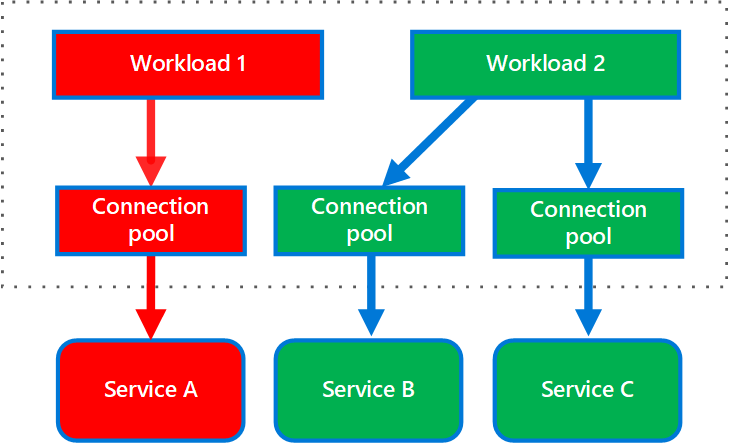The Bulkhead Pattern: Protecting Your Microservices Architecture from Cascading Failures
The Bulkhead pattern is a crucial design strategy that isolates different parts of a system to prevent cascading failures. This blog post explores the pattern, its applications, and scenarios where it may or may not be suitable.
Introduction to the Bulkhead Pattern
The Bulkhead pattern is inspired by the compartments in a ship's hull, where the failure in one compartment doesn't affect others. In microservices, this pattern can prevent a failure in one service from bringing down the whole system.
 Image credits to microsoft
Image credits to microsoft
How the Bulkhead Pattern Works
1. Isolation of Resources
By dividing the system into different isolated partitions, if one part fails, others remain unaffected.
2. Thread Pooling
Different thread pools for different service calls can ensure that if one is exhausted, others can still function.
3. Process-Level Isolation
Services can be run on separate processes or even different machines, further isolating potential failures.
When to Use the Bulkhead Pattern
Use this pattern to:
1. Isolate Resources for Backend Services
-
Use Case: Applications interacting with various backend services.
-
Explanation: Enhances resilience and ensures that one service's failure doesn't affect others.
-
Benefit: Maintains functionality during failures.
2. Isolate Critical Consumers from Standard Consumers
-
Use Case: Scenarios with different priority levels for consumers.
-
Explanation: Isolating critical consumers ensures they have dedicated resources.
-
Benefit: Shields vital functions from failures in non-critical areas.
3. Protect from Cascading Failures
-
Use Case: Systems prone to cascading failures.
-
Explanation: Contains failure to a confined area.
-
Benefit: Enhances system stability.
This pattern may not be suitable when:
1. Less Efficient Use of Resources
-
Consideration: Resource optimization is critical.
-
Explanation: Might lead to underutilized resources.
-
Challenge: Misalignment with the project's need for optimal resource utilization.
2. Added Complexity
-
Consideration: Simplicity in system's architecture.
-
Explanation: Can add unnecessary complexity.
-
Challenge: Might overcomplicate the system.
Conclusion
The Bulkhead pattern offers substantial benefits in resilience and failure isolation but requires balanced implementation against potential inefficiencies and complexity. By evaluating the application's specific needs, this pattern can be an effective strategy for Java-based microservices architecture or any complex system.
For those working with Java and Spring Boot, implementing the Bulkhead pattern can be simplified with libraries like Hystrix or Resilience4j, providing efficient tools to enhance your microservices' stability and performance.
